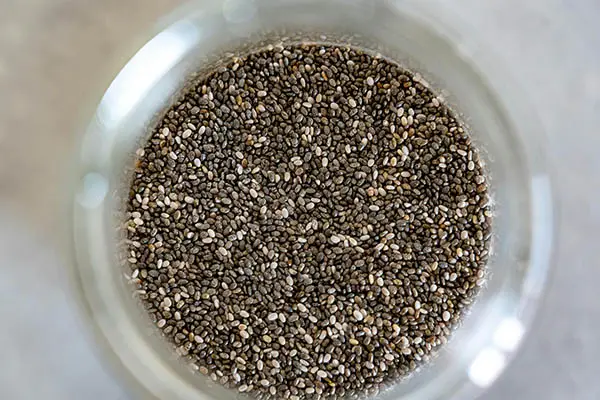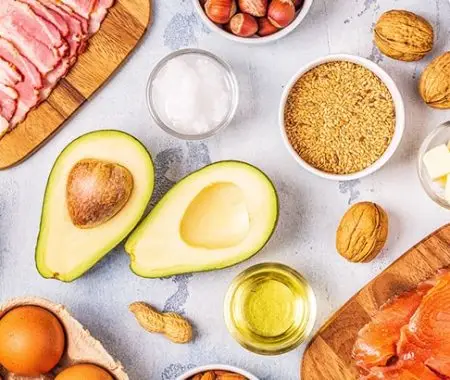The European Commission (EC) and the European Food Safety Authority (EFSA) play a crucial role in food labeling, especially when it comes to products that contain novel foods within the EU. Novel foods have not historically been consumed at all or in large portions. This could include items like fortified spreads or foods that have been altered for nutritional purposes. Regulation (EU) 2015/2283 has recently been introduced to solidify and simplify the older regulations when it comes to presenting novel foods in products. This ensures that the food is safe to consume and accurate labeling prevents customers from being misled or misinformed. This article will guide you through the regulatory requirements for labeling and applying for novel food authorization in the EU, and what its benefits are in the broader market.
TLDR
- Novel Foods Definition: Foods not significantly consumed in the EU before May 15, 1997, including new, technologically advanced, or traditionally non-EU foods.
- Regulation (EU) 2015/2283: Novel Foods require pre-market authorization to ensure safety for consumers and require accurate labeling in the EU and UK.
- Approval Process: Gather and submit comprehensive food information, and undergo safety assessment by EFSA if needed.
- Traditional Food Notification: A simpler process for foods safely consumed for 25 years or more in non-EU/UK countries.
- Labeling Requirements: Novel foods must have a clear identification, intended use, nutritional information, allergen warnings, best before/use by dates, origin, and responsible business details.
- Challenges With Novel Food Regulations: Regulatory complexity, cost, time, and consumer awareness.
- Opportunities For Novel Food Declaration: Innovation, market differentiation, and consumer education.
- Utilizing Technology: Tools like Food Label Maker help businesses comply with labeling requirements efficiently.
What are Novel Foods in the EU?
According to the current EU regulation, novel foods are defined as foods that have “not been consumed to a significant degree by humans in the EU before 15 May 1997”. This includes newly created food products, foods produced using innovative or current technologies, and foods that are usually consumed outside of the EU. If a novel food is replacing a food we already consume, it shouldn’t have less of the important nutrients we need. This means it should be equally healthy and not put us at a nutritional disadvantage.
Regulation (EU) 2015/2283 applies to novel foods in the EU and UK market, aiming to safeguard consumer health and be in the best interest of consumers. The regulation stipulates that if a company wants to sell a food product that contains a novel food, it must go through pre-market authorization before it can be sold in the EU and the UK. Once the business has submitted its relevant findings for its novel food and this has been approved by the European Commission, it is then added to the Union list of authorized novel foods, which outlines all the newly authorized and previously authorized novel foods that already exist in the market. Regulation (EU) 2015/2283 not only reinforces compliance requirements but ensures that the food is ultimately safe to consume, properly labeled, and does not mislead consumers.
See How FoodLabelMaker Can Help You
EU Regulations and Novel Foods Approval Process
To have your novel food approved by the EC regulatory bodies, you need to follow these recommended steps in the authorization process:
- Gather all administrative information, which could include relevant company information, relevant data and a table of contents
- Your application should contain information related to the novel food including:
- The name or identity of the food in question
- The description of the novel food
- The nutritional information
- The production or manufacturing process
- The specifications or compositional data of the novel food
- The novel food’s history or its source
- Its absorption, distribution, metabolism, and excretion (ADME)
- Its uses, use levels, or expected intake
- Any toxicological information or allergen risks if there are any
- A list of references
- The final step includes resource material such as:
- A glossary of terms used
- Any certificates or reports required, including accredited laboratories where tests were conducted, as an example
- Published and unpublished copies of scientific findings
The European Food Safety Authority (EFSA) will also come into play if the EU Commission believes that the food poses a safety risk when consumed. They will ask the EFSA to do a risk assessment which will determine whether your novel food is safe to eat.
If you want to declare a traditional food, which is defined as:
- A food that has been safely consumed
- Within the last 25 years
- In a country external from the UK or EU
there are less strict authorization requirements and the process is much quicker than if you were declaring a novel food. If your traditional food meets the criteria of safe use, and you can provide evidence of this, there will most likely be fewer or no objections raised.
Refer to Regulation (EC) 2017/2469 or the relevant links on the Novel Food section of the European Commission website for more detailed information on this authorization process.
Labeling Requirements for Novel Foods
Labeling requirements for novel foods are fairly similar to those of other foods in the industry. Clear and accurate food labels aim to ensure consumer safety and prevent any misleading claims that might be associated with unfamiliar or complex food products.
According to the European Food Safety Authority (EFSA) and the European Commission regulations:
- The food label must clearly identify the novel food using its authorized name. This ensures that consumers can recognize it as a novel food.
- The label must also provide information on the food’s intended use or how it’s specifically supposed to be used. This ensures that the food is consumed safely and appropriately.
- If the novel food contains allergens, this must be stated for vulnerable consumers.
- Nutritional information must be clearly presented on the label to help consumers make informed dietary choices.
- The label must include the “best before” date or “use by” date, the country of origin, and the name and address of the food business operator responsible for the information provided.
- Some novel foods must also have disclaimers such as stating that the novel food should not be consumed by certain population groups.
- Consider that the font and the size of the font must be legible and large enough for the reader to see. Also, take into account that the label might need to be presented in a bilingual format, depending on where the product is sold.
Challenges and Opportunities in Novel Foods Labeling
Navigating the landscape of food labeling regulations in the EU can be difficult for many business owners. Challenges include:
- The Complexity of Regulations: There can be different requirements and jurisdictions for novel food authorization, and unless you have extensive resources or an expert to guide you, it can be difficult to tick the relevant compliance boxes.
- Cost and Time: Scientific research and gathering findings for authorization can be costly and take time, which slows down your product’s time to market.
- Consumer Awareness: Many consumers are unaware of novel foods or aren’t educated enough about them so they might be hesitant to buy your product or skeptical about its properties.
However, the latest regulations put in place for labeling novel foods offer many opportunities and advantages. Some of these include:
- Innovation Opportunities: Novel foods are sometimes created using cutting-edge scientific processes or procedures which provides you with an opportunity to be a forerunner in this composition and be the first to declare that specific novel food.
- Market Appeal: Novel foods are a way to differentiate your product in a crowded market, and they might attract consumers looking for new and innovative options.
- Education Opportunity: Educating consumers about the benefits, safety, and sustainability of novel foods can build trust and acceptance with your customer base.
Real-world examples
Here are examples of companies that have approved novel foods in their products and marketed them accordingly in the EU:
Novel Food Product: The Impossible Burger
In May 2021, Impossible Foods received authorization from the European Commission to market its plant-based burger in the EU. The key ingredient is soy leghemoglobin which is a novel food that imitates the taste and texture of meat.
Labeling Requirements:
- The label must clearly identify soy leghemoglobin as an ingredient.
- Nutritional information, including protein content and sources, must be provided.
- Any allergen disclaimers related to soy must be shown.
Novel Food Product: Moringa Leaf Powder
Kuli Kuli successfully introduced moringa leaf powder into the EU market after it was recognized as a traditional food from a third country.
Labeling Requirements:
- The label must state that the product is moringa leaf powder.
- Nutritional information and suggested usage must be stated.
- Any allergens must be identified.
Novel Food Product: Chia Seeds
In 2009, The Chia Company submitted an extensive document that received novel food authorization from the European Commission to market chia seeds in the EU. This approval was significant as it paved the way for chia seeds to be widely sold in European markets.
Labeling Requirements:
- The label must identify chia seeds as an ingredient.
- Nutritional information, including the content of omega-3 fatty acids, protein, and fiber, must be provided.
- Any allergen information must be clearly indicated.
Utilizing Technology for Compliance
Many businesses in the food industry could benefit from platforms that assist them in complying with the complex labeling requirements for novel foods. A company such as Food Label Maker does just this. Their easy-to-use software generates compliant food labels that present accurate and enticing nutrition information for your consumers. They have many customizable templates and features that can be tailored to your business needs, while their software is automated to comply with your processes and ease operations. Food Label maker also updates their software regularly and keeps their finger on the pulse, so that their platform aligns with the latest regulatory frameworks.
Utilizing technology and software like that offered by Food Label Maker, companies can stay ahead of the curve when it comes to EU labeling regulations. It also allows you to streamline your business processes more efficiently and have more of a hands-off approach to focus on other areas of your business that might need attention. It also ensures accuracy for your labels that a manual approach sometimes doesn’t always get right. This way, you can know that your product is running smoothly and your customers are being effectively informed to make the best health choices possible.
Conclusion
Companies need to understand and comply with EU novel food regulations, as this can help them thrive in the market for the long term. The updated regulations ensure that all novel foods introduced to the market are safe for consumption, properly labeled, and transparently communicated to consumers. By adhering to these guidelines, businesses can avoid legal pitfalls, and bring innovative products to the European market. This is why it’s important to utilize software like that offered by Food Label Maker and stay informed about evolving novel food regulations. This ultimately fosters a culture of improvement in food safety and a high-quality product for your customers.
FAQs
What are the EU regulations on novel foods?
The EU regulations on novel foods, as stated by Regulation (EU) 2015/2283, mandate that food not significantly consumed within the EU before 1997, must undergo a thorough safety assessment and receive pre-market authorization before being sold. This includes a wide range of products such as newly developed foods, foods produced using new technologies, and traditional foods from third countries. This is so that novel foods are safe to consume, labeled according to EU standards, and present accurate, transparent information to consumers.
What is regulation EU 2015 2283 on novel foods?
Regulation (EU) 2015/2283 is the overarching framework and outlines the list of requirements for novel foods in the EU. It depicts the criteria for what constitutes a novel food and states the requirements for how they are approved and marketed in the industry. The regulation aims to ensure that novel foods are safely labeled for consumers and provides clear guidelines for businesses on the application process, safety assessments, and post-market monitoring.
What insects are approved as novel food in the EU?
Several insects have been approved as novel foods in the EU which reflects a growing interest in edible insects being sustainable and nutritious food sources. Approved insects include the lesser mealworm and the migratory locust as examples. These approvals come with specific requirements regarding their safe use and labeling, so businesses must follow the relevant steps when declaring such a novel food.



